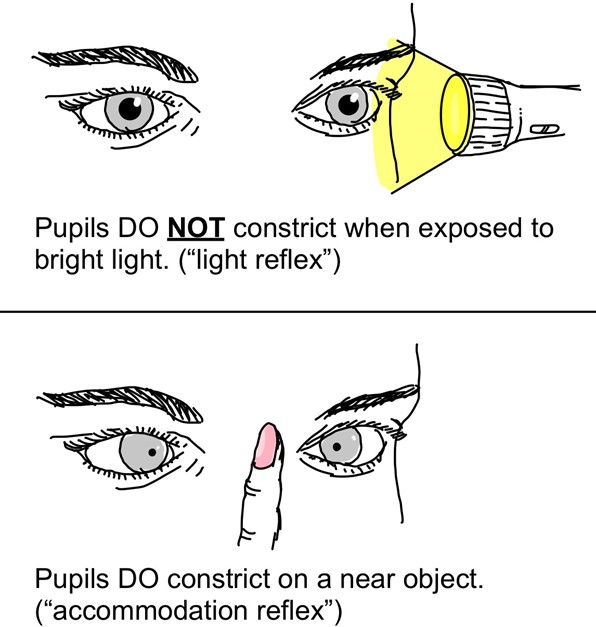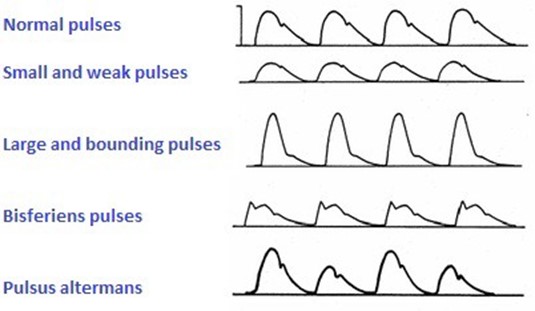The practical nurse (PN) determines that a client's pupils constrict as they change focus from a far object to a near object. How should the PN document this finding?
Peripheral vision intact.
Nystagmus present with pupillary focus.
Consensual pupillary constriction present
Pupils reactive to accommodation
The Correct Answer is D
The correct answer is choice D, Pupils reactive to accommodation. Choice A rationale:
"Peripheral vision intact”. refers to the ability to see objects at the outer edges of one's visual field. It is not relevant to the assessment of pupillary response and does not describe the finding of pupils constricting as they change focus from a far object to a near object.
Choice B rationale:
"Nystagmus present with pupillary focus”. suggests involuntary rapid eye movements accompanied by changes in pupillary response. Nystagmus is not an expected finding during pupillary accommodation, and its presence would indicate a neurological issue rather than a normal response.
Choice C rationale:
"Consensual pupillary constriction present”. refers to both pupils constricting when light is shined into one eye. While this finding is normal, it does not specifically describe the pupils' response during accommodation when focusing from a far object to a near object.
Choice D rationale:

"Pupils reactive to accommodation”. accurately describes the normal physiological response of the pupils constricting as they change focus from a distant object to a nearby object. This response ensures that the appropriate amount of light enters the eyes to maintain clear vision during different distances of focus.
Nursing Test Bank
Naxlex Comprehensive Predictor Exams
Related Questions
Correct Answer is A
Explanation
A thready pulse is a weak and rapid pulse that is easily obliterated by light pressure. It indicates poor blood flow and perfusion and may be caused by conditions such as shock, dehydration, or hemorrhage.

The other options are not correct because:
B. A missing pulse is a pulse that is absent or cannot be detected, even with firm pressure. It indicates a complete blockage of blood flow, and may be caused by conditions such as arterial occlusion, embolism, or trauma.
C. Light pressure applied to pulse is not a documentation of the pulse quality, but a description of the technique used to palpate the pulse.
D. Pulse skips beats is a documentation of an irregular pulse rhythm, not a pulse volume. It indicates that the heart beats are unevenly spaced, and may be caused by conditions such as arrhythmia, stress, or caffeine intake.
Correct Answer is C
Explanation
This is the most important information for the PN to ask because it assesses the client's risk for self-harm and suicidal ideation. The client's statements indicate hopelessness, low self-esteem, and impaired functioning, which are potential warning signs of suicide. The PN should ask the client directly about any thoughts or plans of harming themselves and provide support and safety measures as needed.
A. Questioning about which rituals are most often used to reduce anxiety is not a priority and may reinforce the client's compulsive behavior.
B. Asking if the obsessions and compulsions interfere with sleep is not a priority and may not address the client's emotional distress.
D.Determining what makes the client think people are laughing is not a priority and may not be helpful for the client's perception of reality.
Whether you are a student looking to ace your exams or a practicing nurse seeking to enhance your expertise , our nursing education contents will empower you with the confidence and competence to make a difference in the lives of patients and become a respected leader in the healthcare field.
Visit Naxlex, invest in your future and unlock endless possibilities with our unparalleled nursing education contents today
Report Wrong Answer on the Current Question
Do you disagree with the answer? If yes, what is your expected answer? Explain.
Kindly be descriptive with the issue you are facing.
